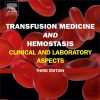Wireless Wearable Doppler Ultrasound: Monitoring Trauma Patients
onlinelibrary.wiley.comThis study demonstrated the feasibility of placing the wireless, wearable Doppler ultrasound on severely injured trauma patients admitted to the trauma bay of a busy level 1 trauma center.
The device reliably captured the corrected carotid artery flow time (ccFT) prior to cycling a NIBP cuff in the vast majority of instances across most patients.
Moreover, in the small number of patients transfused with blood products, ccFT appeared lower than in non-transfused patients.
The clinical importance of monitoring ccFT in severely injured trauma patients at risk of traumatic hemorrhage should be evaluated in large, multicenter prospective cohort studies.
Device placement succeeded in 94% of patients (n = 31) and the data were captured and transferred from all 31.
The consecutive cardiac cycles before blood pressure measurement exceeded 15 (p = .015) in 93% of patients (n = 28).

















